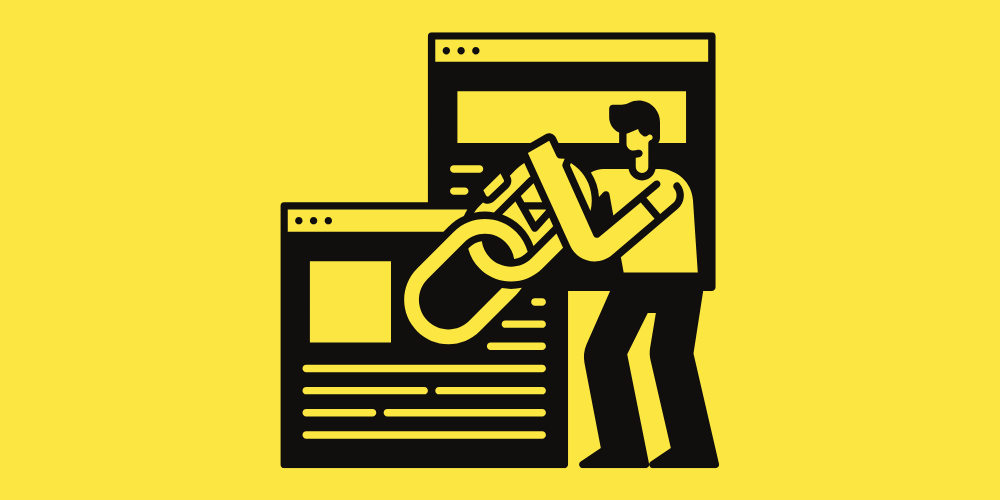Just as we see in Social Media world that Liking, sharing, reposting is a sign of a good content or post, in a similar way, in the world of SEO, backlinks are like votes of confidence. It increases the credibility of the website and its service or content. But as valuable as backlinks are, many businesses fall into traps that actually hurt their rankings. Let’s look at some common backlinking mistakes that can sabotage your site’s ranking and, most importantly, what to do instead.
Why Backlinks Matter and How They Can Hurt You
Google sees backlinks as endorsements from other websites. When quality sites link to you, it’s like a nod of approval that tells Google, “This content is valuable and relevant.” But getting backlinks just to check off an SEO box won’t help; Google’s algorithms are much more sophisticated now. If backlinks are done incorrectly or without thought to quality, they can quickly backfire.
The Biggest Backlinking Mistakes to Avoid
Let’s dive into the major mistakes that are hurting your Google rank and how to sidestep them.
1. Prioritizing Quantity Over Quality
Back in the day, the more backlinks you had, the better your ranking. But that’s old news. Google now emphasizes quality over quantity—a thousand low-quality backlinks aren’t as valuable as a handful of high-quality, relevant ones.
Solution: Focus on earning backlinks from reputable, high-authority sites. Reach out to websites within your niche, provide insightful comments on forums, or offer to guest post. Tools like Ahrefs or Moz’s Link Explorer can help you analyze backlink quality and identify the authority of linking sites.
2. Ignoring Relevance of Backlinks
A backlink from a fashion blog isn’t valuable if your business is about software solutions. If Google sees too many irrelevant backlinks, it may conclude that your backlink profile is unnatural and lower your ranking.
Solution: Concentrate on links from websites relevant to your industry. Consider reaching out to industry-related blogs, news sites, or websites in similar niches. Semrush’s backlink analytics can help you filter backlinks by industry, making it easier to target relevant sites.
3. Overusing Exact-Match Anchor Text
Using exact-match keywords in anchor text used to be a popular tactic. But today, overdoing this can get you penalized, as Google interprets it as manipulative.
Solution: Diversify your anchor text. Mix up your keywords, use natural phrases, and sometimes even plain URLs. Tools like SEMrush and Ahrefs can analyze anchor text to help ensure a healthy mix.
4. Buying Backlinks
The promise of cheap backlinks can be tempting, but buying backlinks from link farms is a quick way to get penalized by Google. Paid backlinks usually come from low-quality sites, which does nothing but harm your ranking.
Solution: Focus on organic backlink strategies instead. For example, you could create valuable content that naturally attracts backlinks. Content collaborations, expert roundups, and guest blogging are legitimate ways to gain backlinks without violating Google’s guidelines.
5. Neglecting Broken Link Building Opportunities
Broken link building is an underused but powerful tactic. If high-authority sites link to content that no longer exists, you can reach out and suggest your own relevant content as a replacement.
Solution: Use tools like Check My Links (for Chrome) to find broken links on relevant websites. Reach out to the website owner and offer your link as a fix. This way, you’re providing value while earning a high-quality backlink.
Tools That Help You Optimize Your Backlink Strategy
Let’s look at some essential tools for improving your backlink profile and fixing these mistakes:
- Ahrefs: Great for competitor analysis, identifying broken links, and tracking your backlinks over time.
- Moz’s Link Explorer: Helps with link tracking, including authority and relevancy insights.
- BuzzSumo: Excellent for finding popular content topics and identifying sites for potential backlink opportunities.
- Google Search Console: Allows you to see which sites are linking to yours and any errors in your backlink profile.
Real-World Example: Skyscanner’s Organic Backlink Strategy
Skyscanner, the global travel search site, is a case in point for a quality-focused backlink strategy. Rather than relying on paid links or spammy backlink tactics, Skyscanner focuses on user-generated content and helpful blog posts that attract natural backlinks. They also run periodic content campaigns with valuable data (like the cheapest destinations by month) that other sites want to reference and link to.
The results? A steady stream of high-quality backlinks from reputable travel blogs, news sites, and influencers, boosting their Google rank naturally. This is a prime example of how investing in quality and relevance pays off over time.
Taking Action: How to Clean Up Your Backlink Profile
If you’ve made any of these backlinking mistakes, don’t worry—you can start making improvements right away.
1. Audit Your Backlinks
The first step to fixing backlink mistakes is identifying what’s wrong. Tools like Google Search Console and Ahrefs can help audit your backlinks and flag low-quality links. Look for:
- Spammy or low-quality sites linking to you
- Irrelevant websites
- Excessive exact-match anchors
2. Disavow Harmful Links
If you’ve accumulated backlinks that may be hurting your site, it’s time to disavow them. Google’s Disavow Tool allows you to tell Google which links you don’t want to be associated with. While disavowing links should be a last resort, it’s useful if you have too many harmful links.
3. Create Valuable Content to Attract High-Quality Links
Building valuable content is the best way to attract organic backlinks. Whether it’s through blog posts, data studies, or infographics, aim to produce content that people naturally want to link to. Case studies, how-to guides, and infographics tend to attract high-quality links.
4. Collaborate with Influencers and Industry Leaders
Collaborating with influencers or partnering on content projects can help your content reach a wider audience, increasing your chances of earning high-quality backlinks. For example, creating a data report in collaboration with an influencer in your industry can lead to valuable backlinks from their followers’ websites.
Optimizing Your Backlink Strategy Moving Forward
Once you’ve addressed any existing backlinking mistakes, it’s essential to stay on top of your strategy with regular monitoring and adjustments. Here’s a checklist to keep you on track:
- Monthly Backlink Check: Use a tool like Ahrefs to check your backlink profile every month, looking out for new low-quality links that might harm your rank.
- Quarterly Competitor Analysis: Regularly review your competitors’ backlink profiles. Are they getting links from websites you could also reach out to?
- Content Refresh: Updating your content regularly with new insights or data keeps it relevant and can help attract new backlinks.
Wrapping It Up: Quality Wins the Backlink Race
Backlinking mistakes can be costly for your Google rank, but by focusing on quality, relevance, and organic strategies, you can build a strong backlink profile that bolsters your SEO. Avoid spammy tactics and prioritize creating value both for users and for the sites linking to you.
So next time you’re strategizing about SEO, remember—backlinking is about relationships, not just rankings. Focus on building authentic connections in your industry, and watch as your rank climbs steadily in a way that lasts.




